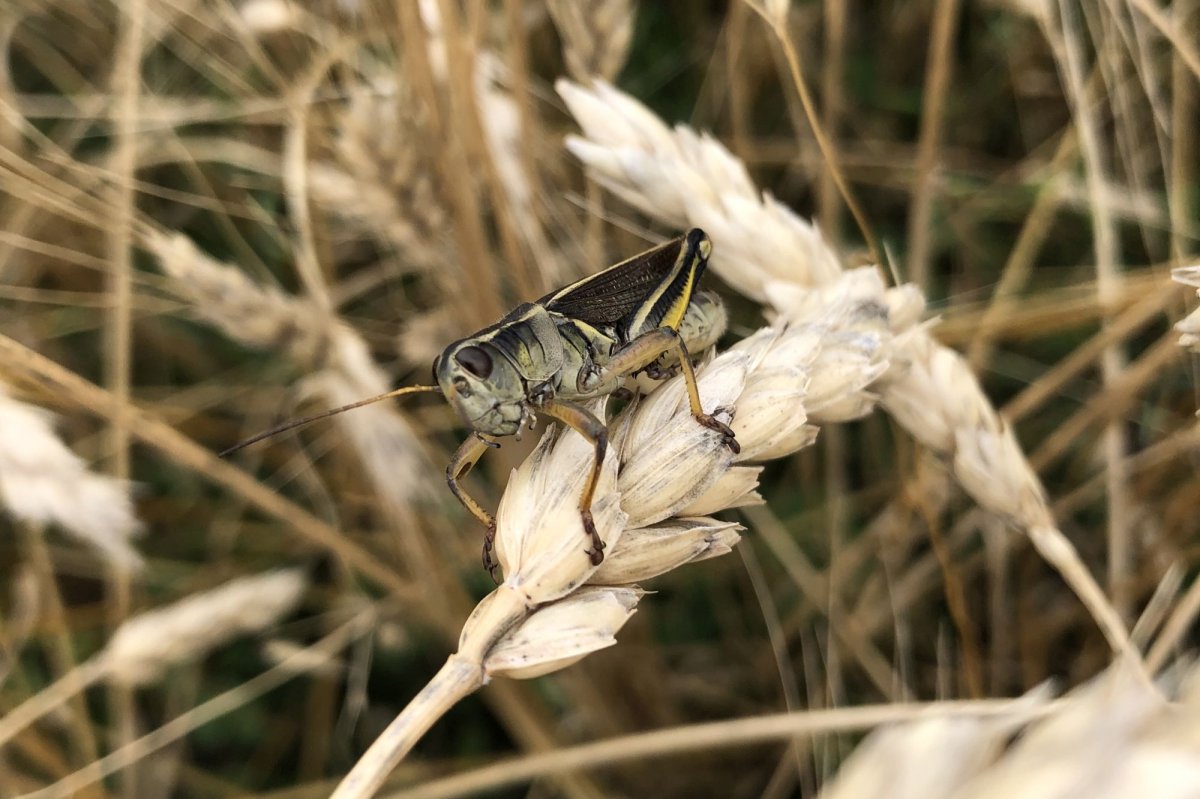Plans are in motion to raise and house insects that could pose a threat to future crops at a new facility in Saskatoon.

The proposed facility will be led by plant science professor Sean Prager, the first entomologist at the University of Saskatchewan (USask) College of Agriculture and Bioresources.
The USask Insect Research Facility (USIRF) would be one of only a handful in Canada specifically designed to conduct research on arthropod plant pests and beneficial insects, according to officials
“In order to do a lot of the kinds of research we want to do on insect pests, particularly insect pests of agriculture, you need facilities that allow you to keep those insect pests,” Prager said.
“You don’t necessarily want to release them by accident into the Saskatchewan landscape or they’ll go after the actual crops.
“We need a place that’s designated for keeping these sorts of problematic insects and pathogens to a certain extent as well, away from those things that we want to keep happy.”

Prager said they’ll work with plant breeders to identify problematic resistance traits to pests that are yet to be established, which provides a head start when it’s taken into account how much time it takes to breed new varieties and cultivars.
“There are lots of that already affecting crops in Saskatchewan. The one that everyone thinks of is grasshoppers, but we have various species of beetles, we have some flies, we have lots of true bugs, aphids,” Prager said.
“But the important part is that for each of those pests that we have that are here, there’s probably another half a dozen, depending on what (crop) it is, that aren’t here that could be here that are also problematic.
“We’re hoping that we can do is preemptively identify those insects and to a lesser extent, pathogens that could become a problem in Saskatchewan and develop some ways of controlling and managing those sort of prophylactically so we already have those mechanisms ready if or when those things become pests.”
Funding for the $1.2-million USIRF will be provided from a variety of sources, which includes the Western Grains Research Foundation (WGRF).
“This facility is going to allow scientists to raise insects of interest. And so they can learn more about the life cycle and the habits of these insects and identify whether the benefit or harm they might cause to Western Canadian grain farmers,” WGRF executive director Garth Patterson said.
“This is a new and unique facility that we anticipate is going to provide benefits to farmers down the road.”

Patterson hopes this new facility will result in new and sustainable pest management strategies for Western Canada field crops including canola, wheat, barley, oats and pulses.
“Insects are becoming more and more of an interest to Western Canadian farmers, both from the damage they could do to a crop, but also some of the benefits they provide to a crop,” Patterson said.
“We’re seeing changes in insect populations due to climate change and due to changes in cropping patterns so this facility will allow scientists to help plan (for) and identify those insects that are either harmful or helpful to farmers.”
Dr. James Tansey, provincial insect/pest management specialist with the Ministry of Agriculture, said Saskatchewan is always on the lookout for new pests.
“Range extensions are occurring for some pest species with warming conditions and invasive species are always a concern. There are also natural enemies of pests and changing thresholds for crops as pest species ebb and flow and agronomic practices change and new varieties are developed,” Tansey said.
“It’s certainly not a simple system. Because of the complexities, we are thrilled to see resources dedicated to insect research.
“Damage from insect feeding includes direct munching, like you’ll see with grasshoppers, loss of turgor and damage to reproductive structures like occurs with piercing-sucking feeders like Lygus or aphids, vectoring of disease, subterranean damage like that caused by wireworms, root maggots, and some cutworm species, seed feeding by some weevils, the list is very long.”
Design work has begun with hopes the facility will be authorized by the Canadian Food Inspection Agency and up and running by summer 2022. USIRF will be located inside USask’s Agriculture Building.


Comments